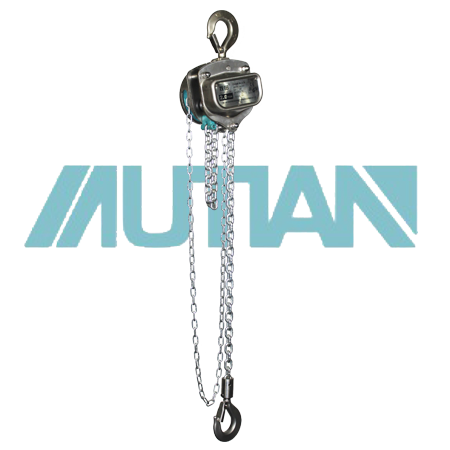 中文版
中文版



Welcome to contact us by phone:0086-0312-7969888
Corrosion-resistant hand chain hoists are designed for use in environments where exposure to moisture, chemicals, or other corrosive substances is a concern. These hoists are typically constructed from materials such as stainless steel or galvanized steel, which offer enhanced resistance to corrosion compared to standard hoists.
Here are some typical usage guidelines and restrictions for corrosion-resistant hand chain hoists:
Suitable Environments: They are suitable for use in environments where there is a risk of corrosion, such as marine environments, chemical processing plants, wastewater treatment facilities, and outdoor applications where exposure to the elements is a concern.
Corrosive Substances: Corrosion-resistant hand chain hoists can withstand exposure to a variety of corrosive substances including saltwater, acids, alkalis, and other chemicals commonly found in industrial environments.
Operating Conditions: They are designed to operate in a wide range of temperatures and weather conditions. However, extreme temperatures or conditions outside of the specified operating range may affect performance and durability.
Load Capacity: Corrosion-resistant hand chain hoists have specified load capacities, which should not be exceeded. It's important to use the hoist within its rated capacity to ensure safe operation.
Regular Maintenance: Despite their corrosion-resistant properties, regular maintenance is still required to ensure optimal performance and safety. This includes inspections, lubrication of moving parts, and cleaning to remove any buildup of contaminants.
Training and Certification: Users should be properly trained in the safe operation of hand chain hoists, including how to inspect the equipment for signs of wear or damage. In some jurisdictions, operators may be required to hold certification or undergo specific training before using lifting equipment.
Restrictions: Corrosion-resistant hand chain hoists may have limitations on certain applications or conditions. For example, they may not be suitable for use in explosive atmospheres unless they are specifically rated for such environments.
Compliance: Ensure that the hoist complies with relevant safety standards and regulations in your jurisdiction, such as those set by OSHA (Occupational Safety and Health Administration) in the United States or equivalent regulatory bodies in other countries.
By adhering to these guidelines and restrictions, you can ensure the safe and effective use of corrosion-resistant hand chain hoists in corrosive environments.
X